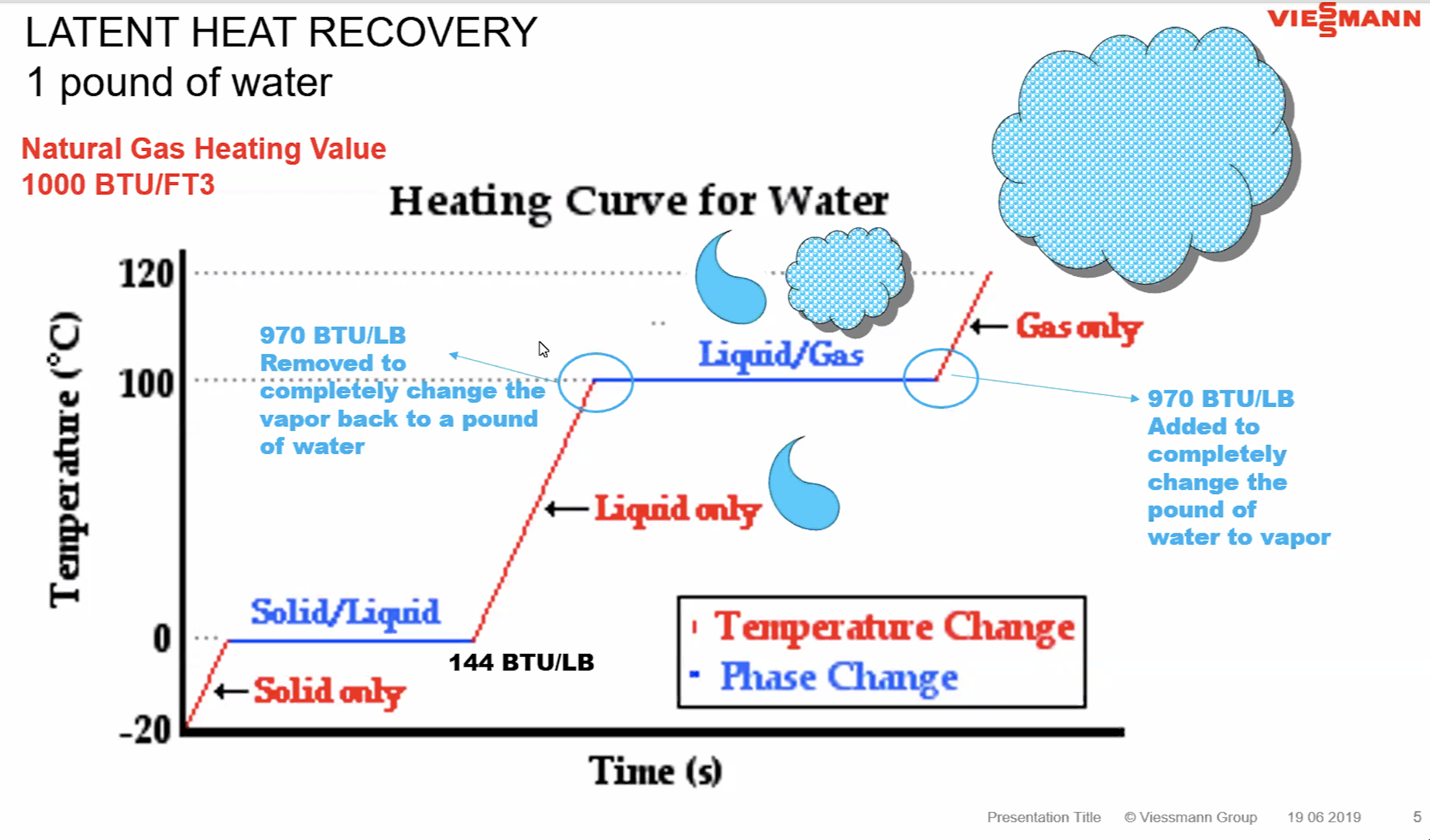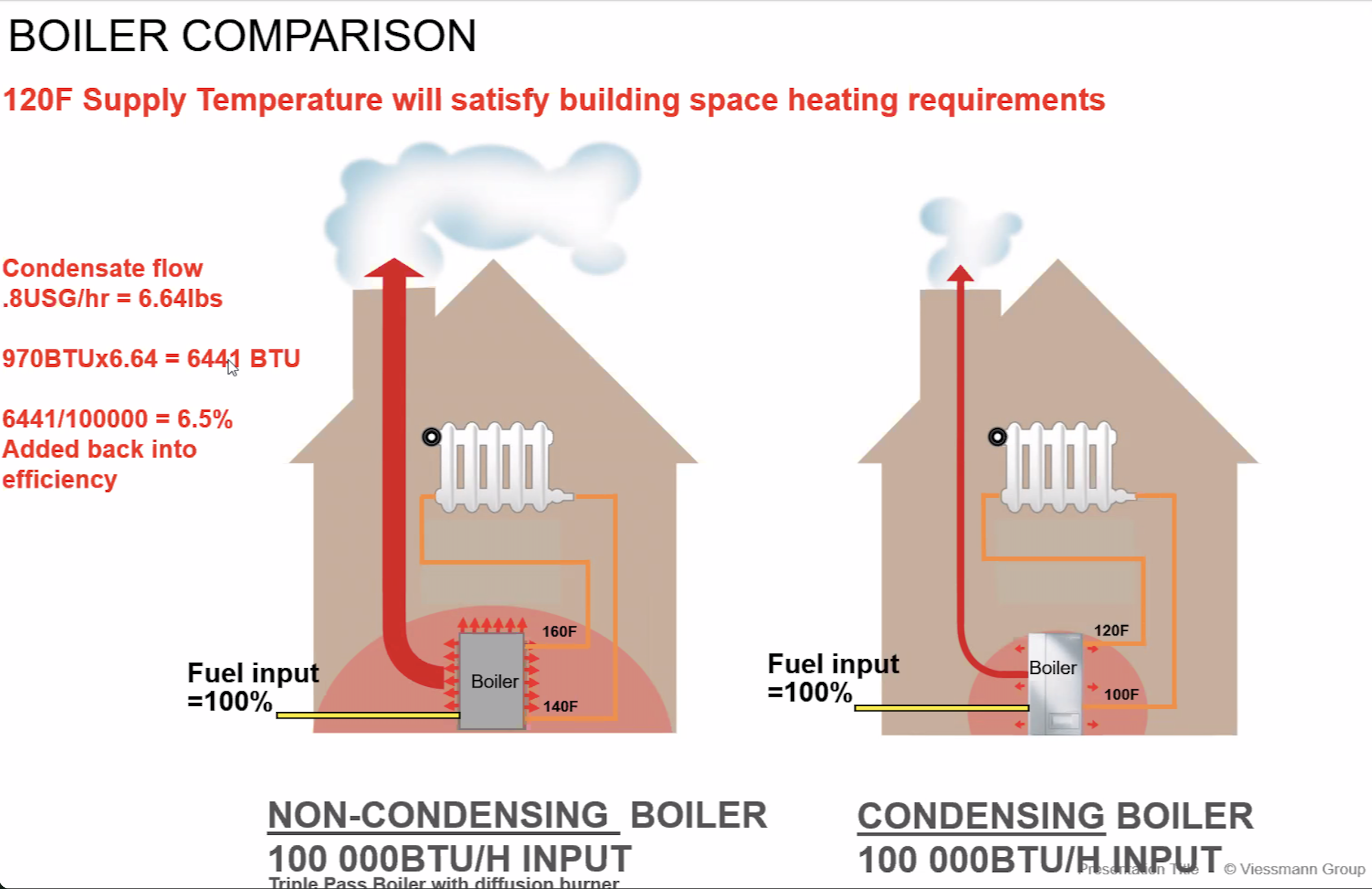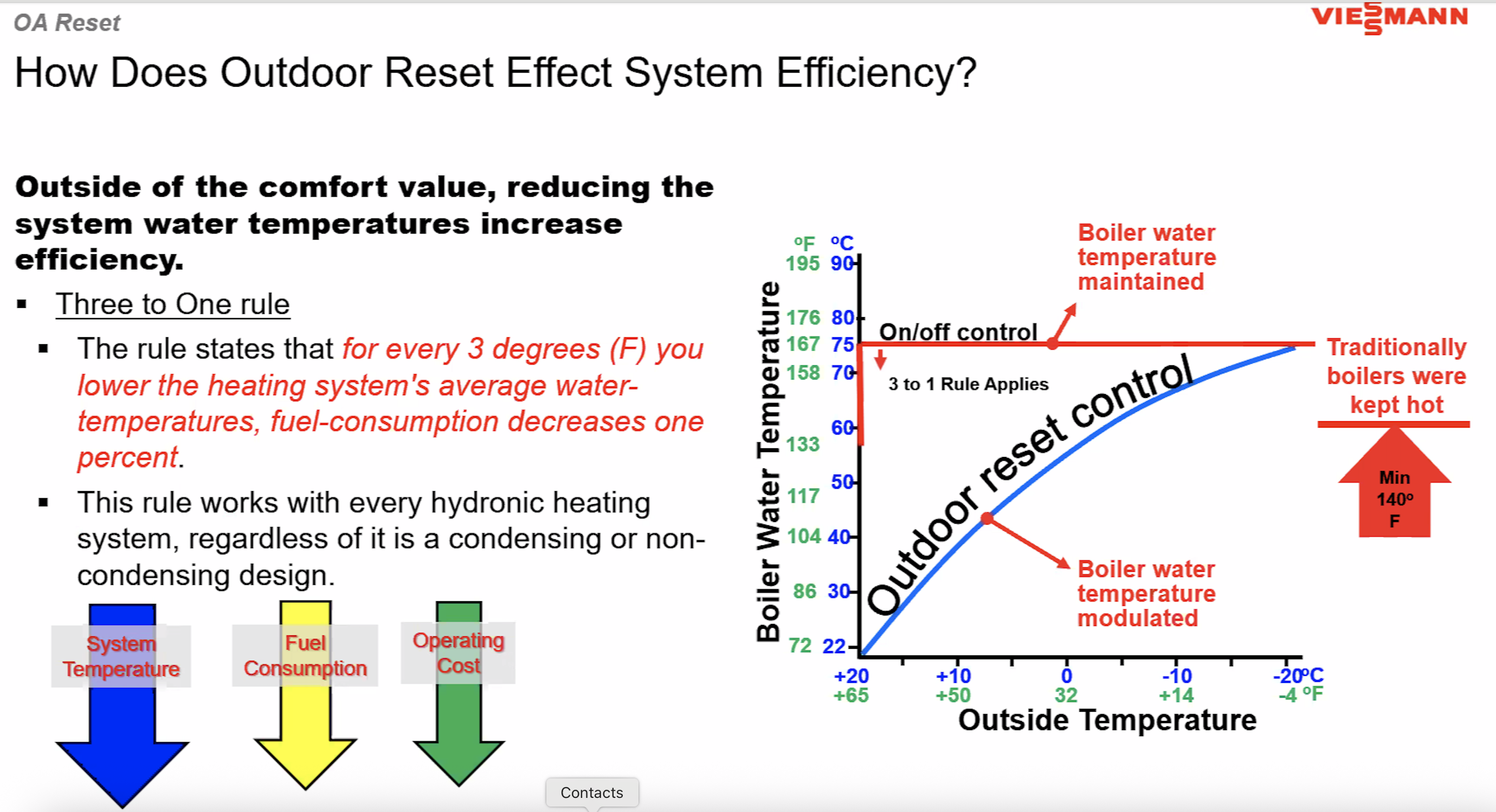Best Of
Re: Radiator vent loudly sucking air INWARD after boiler turns off
All true. However if it is doing it this year but not last, or only does it now and then — some other vent somewhere (likely the main vent) is sticking closed when it shouldn't or didn't.
Re: CI plug extract Burnham 9A; any ideas?
what do you need us for…
you could probably take a die grinder and grind most of it away too.
even if you did cut too deep unless it was way too deep could probably put it together with permatex and make it work.
Re: Indirect water heater as steam(water) to hydro zone HX (poor heat transfer)
you are sure both circulators are spinning?
The coil could thermosiphon from the boiler imitating a plugged coil?
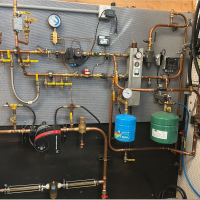 hot_rod
hot_rod
Re: Indirect water heater as steam(water) to hydro zone HX (poor heat transfer)
You could just drop an endoscope camera down the TPV orifice. But that doesn't seem as interesting as cutting it open
Re: Your opinion please about Temu sponsorship
I associate Temu with poor Chinese products. I don't think it's a good idea to be associated with them.
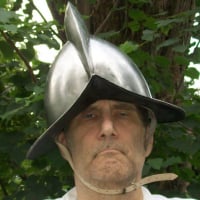 CLamb
CLamb
Re: Your opinion please about Temu sponsorship
I would avoid TEMU entirely as it would cause you a great deal of blame by simple association to them.
Re: Replacing draft regulator or draft control on a residential fuel oil boiler
One of the first things I caught from Jim that caused me to highly respect him was his unabashed recognition that blind adherence to some codes, standards and mfrs. instructions can kill or at least result in subpar performance, shortened equipment life, and operating malfunctions.
I sit on multiple cmtes. that write national codes and standards. I have grown weary of the ignorant peacocks who get on these boards and don't know which end of a chimney to light. In general, I find codes, stds. and mfrs. roughly 20yrs behind the times- at minimum. They promulgate ideas that are not only unproven but, more often, proven bad or contrary to the intent. Sounds like our government?
I have a reputation of teaching and preaching codes, stds., and mfrs. instructions. Much of that was born out of my work for a major hearth appliance mfr. as a regional quality assurance mgr. I worked in the test labs, met with inspectors and investigators on cases and dealt daily with corporate attorneys and risk reduction cmtes. Here are a few points to ponder:
If you violate codes, stds. and PMI, it's not a problem until its a problem
If there is an Oops!, someone will try to pin it on you.
To provide negligence, you must prove all 4- duty to act, loss, act or omission, and proximate cause.
To prove failure to warn, you only need to show the contractor failed to fully communicate the hazard, the risk of not confronting that hazard, the consequences of failure to mitigate or correct and the sequelae of that failure. Failure to warn relies on sentiment much more than facts. It's a subjective issue whereas negligence is based on facts and circumstances.
If you are trained, certified, and experienced in a field but fail to warm over a hazard that is clearly visible or should be expected under the conditions of use, REGARDLESS of what you're there for, you're toast.
If you follow The Rules but there is still a loss, you still incur liability.
So, the bottom line I've come to recognize is to follow the rules to the extent reasonably possible but in ALL cases, doing what works trumps what you "should" do. If you set the manifold pressure on a gas combination valve to 4.0 wci. instead of 3.5 but nothing goes wrong, there is no premature failure of the equipment and no one gets hurt, is it a hazard to the public trust? Compare that to setting at 3.5wci, testing and recording high CO but leaving it in service because you set it pmi? Can you live with someone losing their home or life because you "followed the rules"? THAT is why we all should be testing to prove we're leaving stuff in a condition suitable for continued use under the intended conditions and application.
I never met an appliance that could read a damned code book, std. or mfrs. instructions. I've met many that are going to do what they want under the conditions of use. I figured out it was up to me to take control of those conditions and not leave it up to a machine that can and will eventually fail.
Re: Oil guy couldn't fill my tank today
Yes, it's the return temperature that controls the condensing at the boiler. So low SWT, or a wider delta can help keep you in condensing mode.
So run condensing mode as often as possible, use modulation, enable and configure step delay, outdoor reset for long even cycles.
 hot_rod
hot_rod
Re: copper pipe feedback
Another update for those that have been so helpful and (might) still be interested in our ongoing saga. In another unexpected twist, I found a steam expert in KC who I hired to come out and evaluate our system prior to any more work. He determined that we actually have a hot water system with convector radiators and that at some point in the distant past, someone incorrectly attached a steam boiler to it. I wouldn't be surprised if this happened many, many years ago and the previous home owners suffered through noisy, hammering winters and just chalked it up to being an old house. He drafted a plan to re-pipe the boiler, add a pump, and convert back to hot water. Might actually be less expensive than the near boiler steam re-piping. I feel confident that he knows what he is talking about and that this may remedy our situation. I guess this would remove my initial question from the "strictly steam" forum, haha. Hard to believe this mistake actually happened and wasn't diagnosed sooner, but hopefully we are nearing a solution. If not, I am ready to throw in the towel and install a forced air furnace! I welcome any final thoughts before the conversion back to hot water happens…
Re: Baseboard heaters lukewarm despite boiler being hot
the circ inside the boiler needs to be a non ECM type
It has a tekmar variable speed control operating it, so only the old style PSC pump will work
Grundfos 15-58, 007, Wilo Star 21, etc
In a bind you could jut wire a cord to the pump inside the boiler and let it run until you troubleshoot the control
 hot_rod
hot_rod


